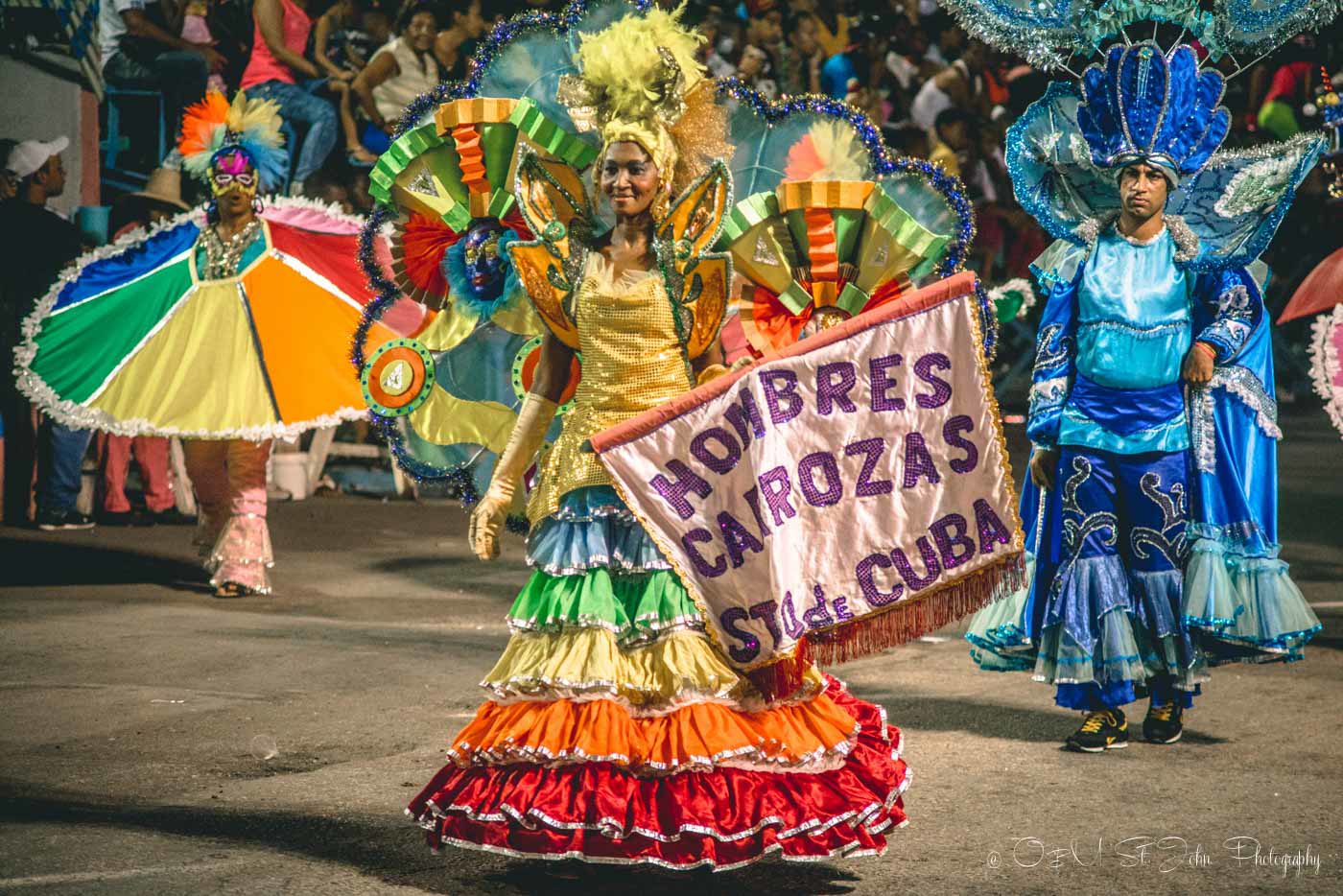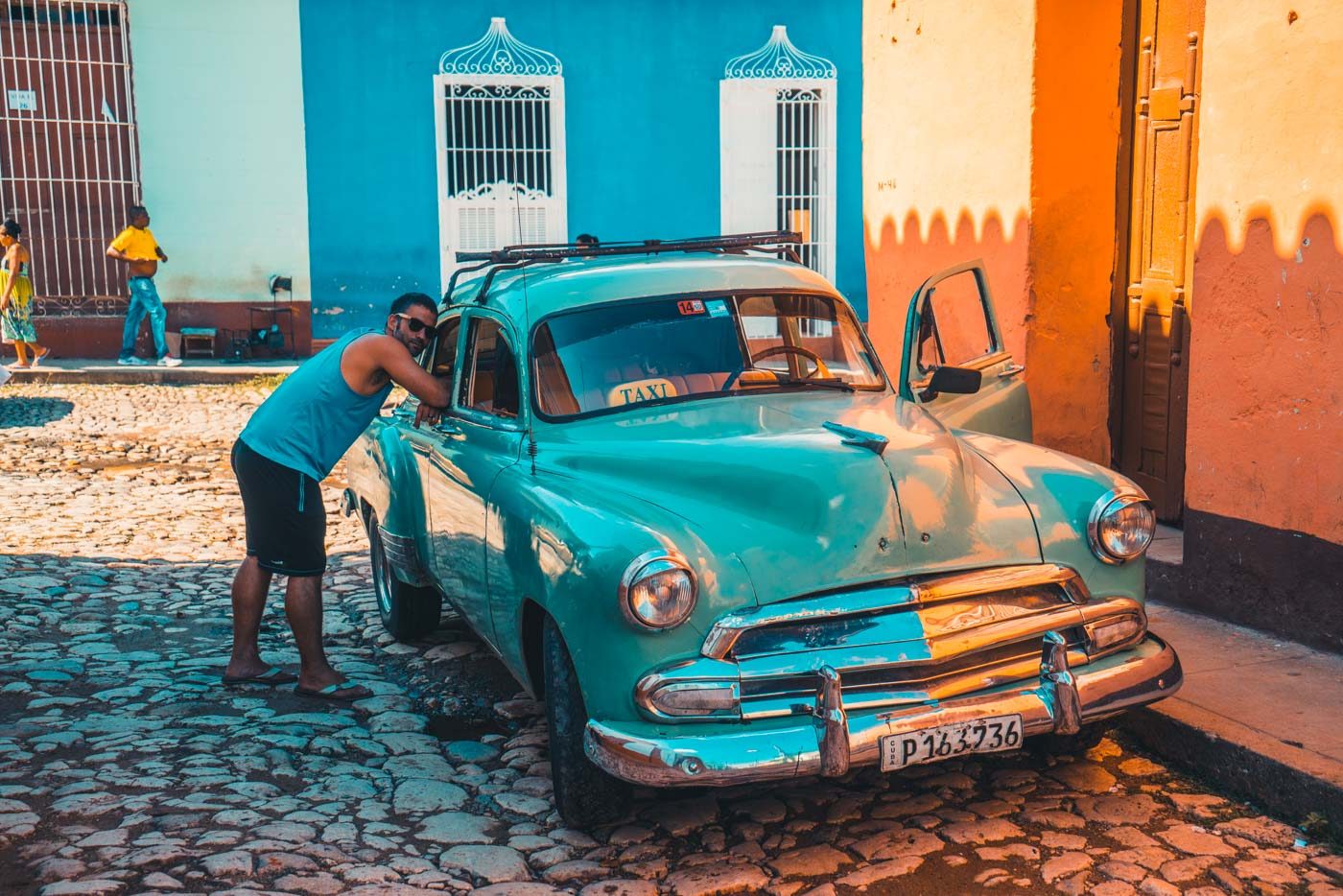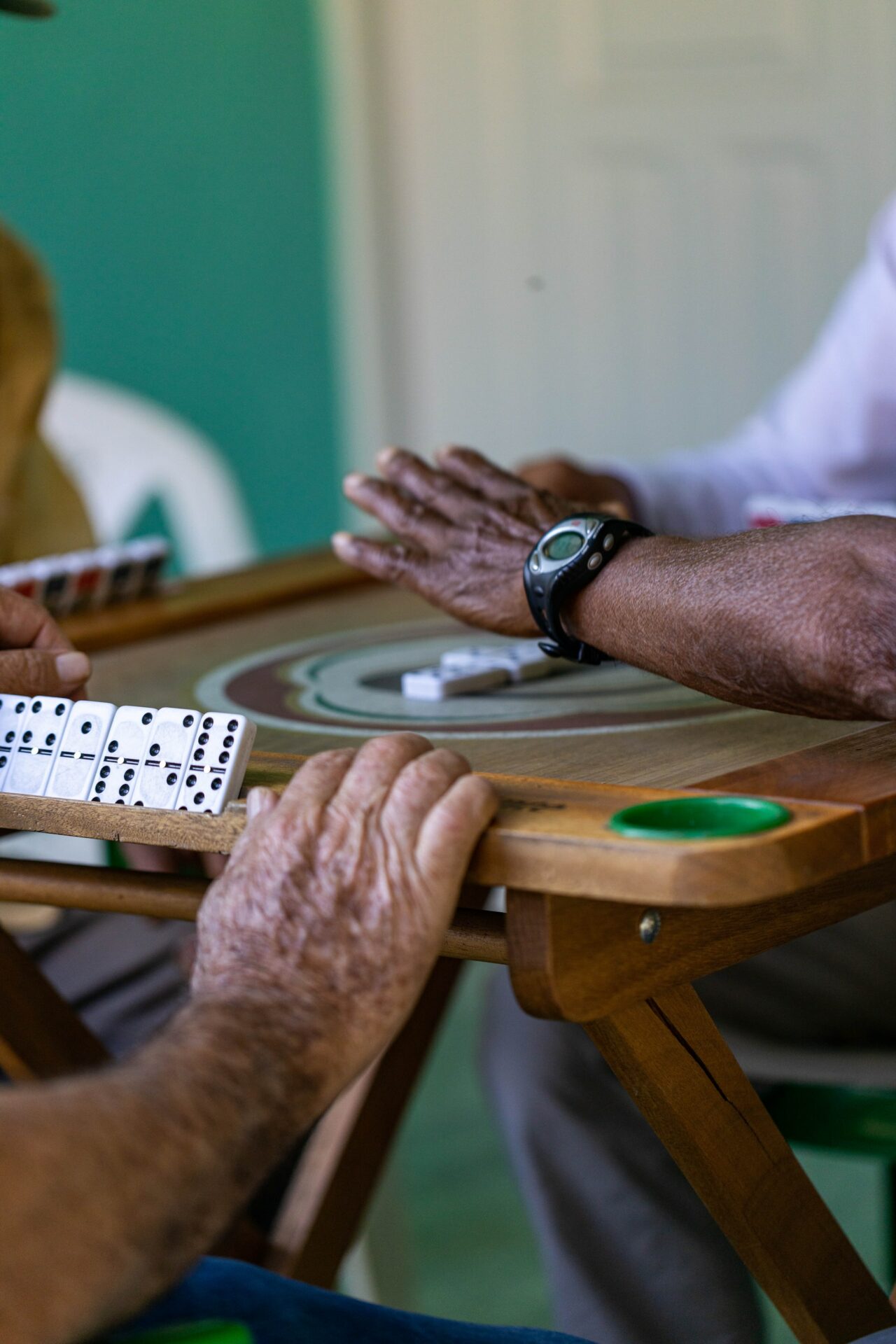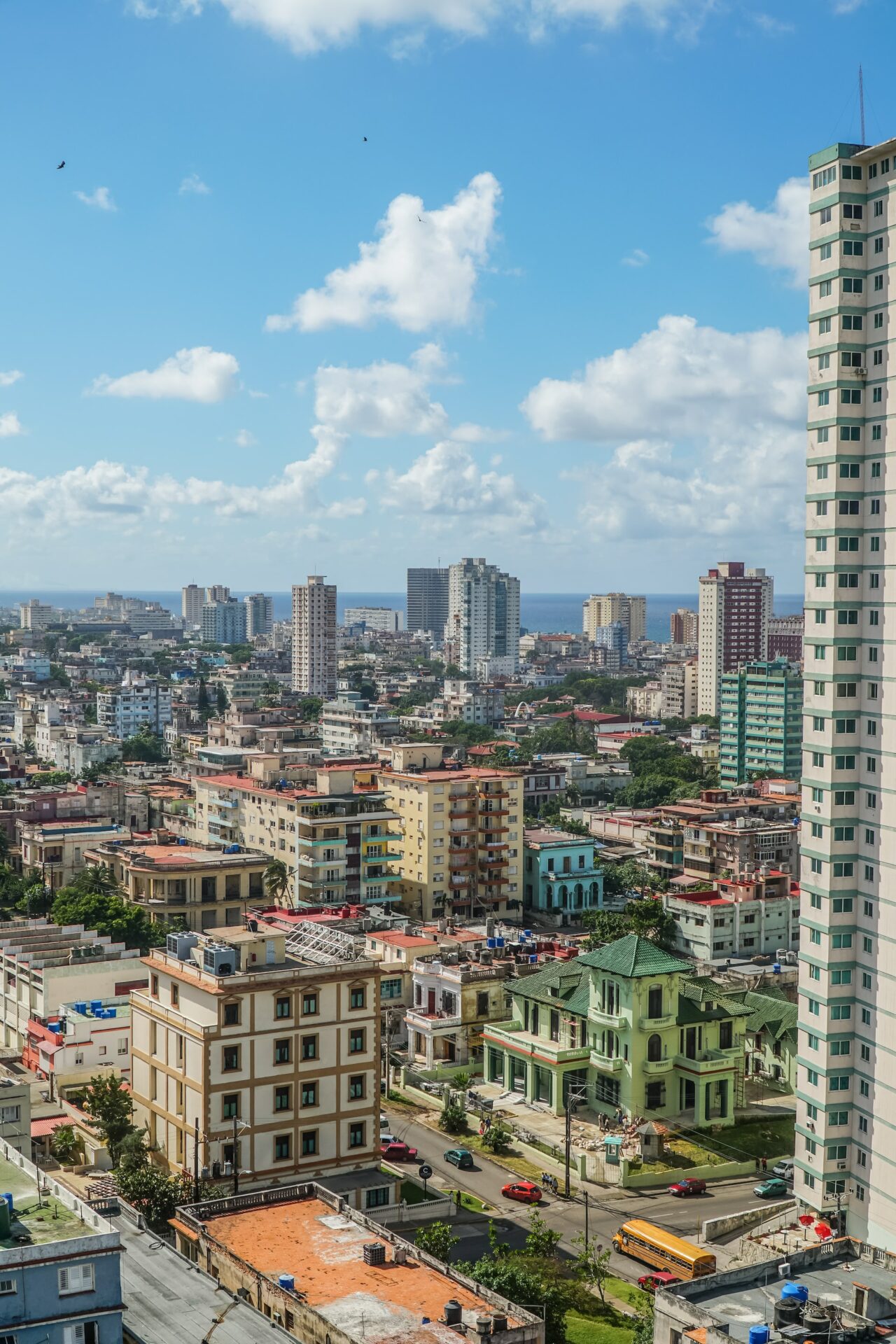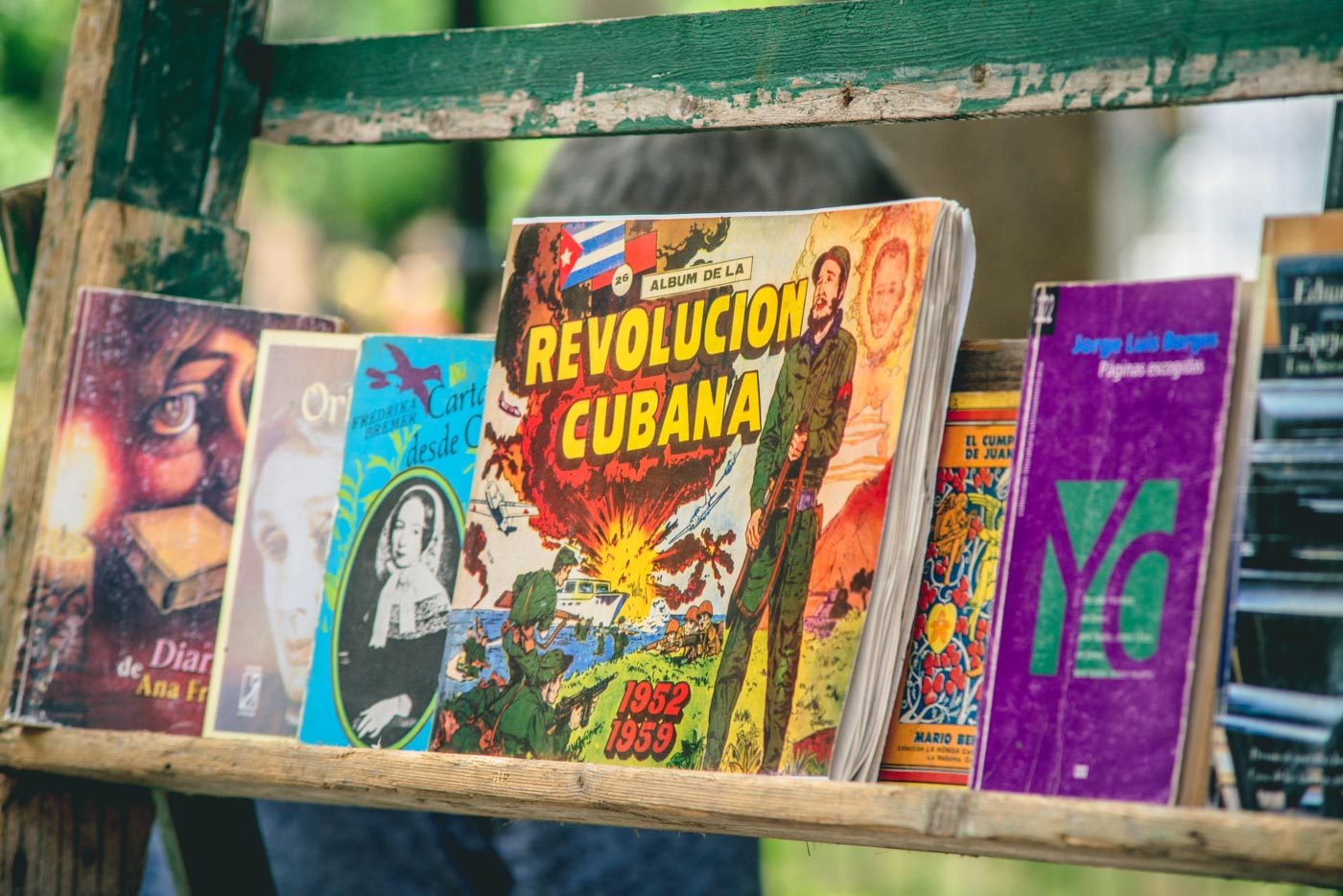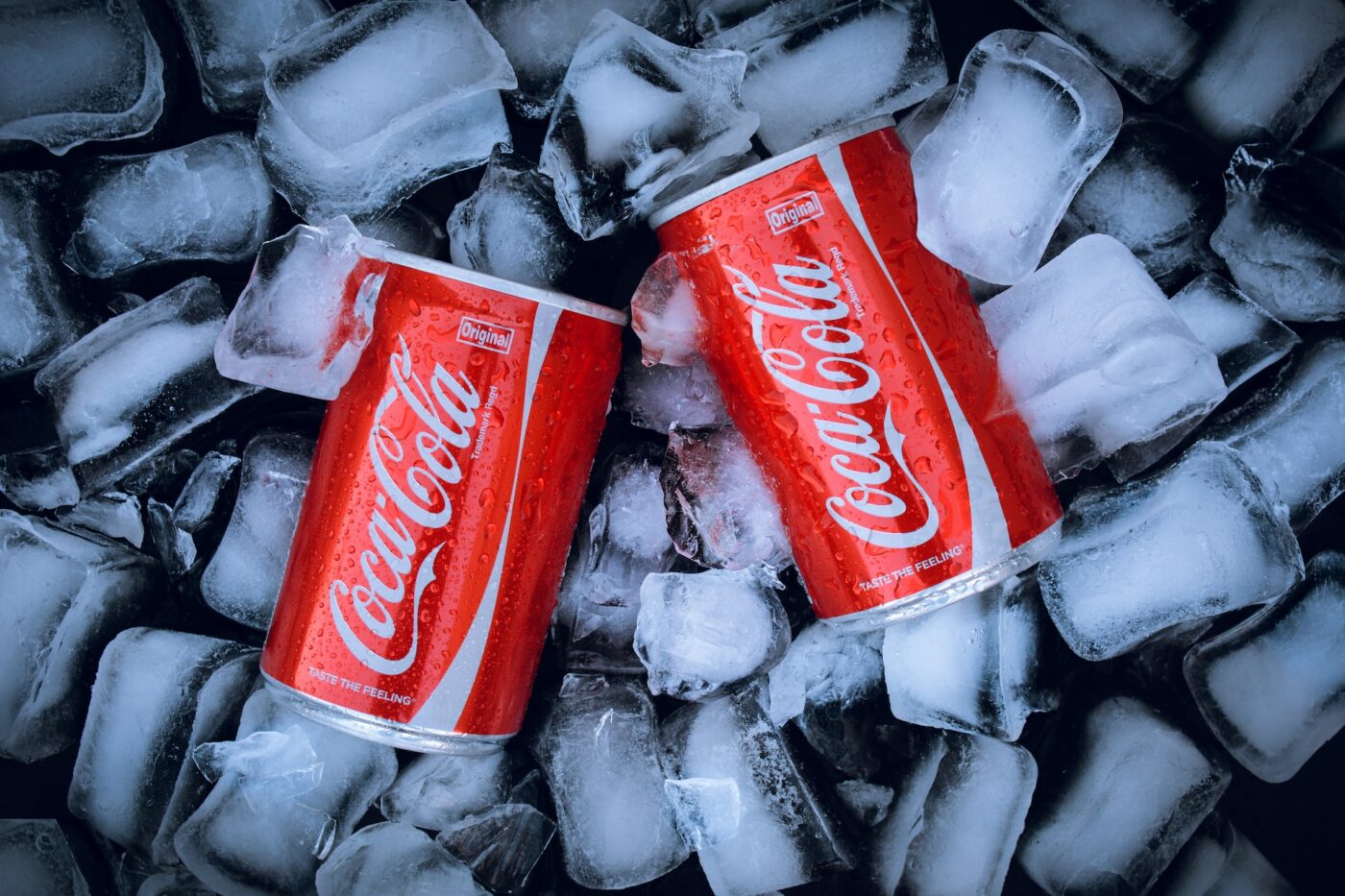While in pop culture it is primarily known for rum and cigars, those are definitely not Cuba’s only draws. Cuba is a bright, bustling, and colourful country, with incredible architecture, rich culture, and equally rich wildlife. It’s a hotspot for divers, photographers, historians, and many others. It’s a welcoming country, with a friendly population as vibrant as the scenery.
*This post may contain affiliate links, as a result, we may receive a small commission (at no extra cost to you) on any bookings/purchases you make through the links in this post. As an Amazon Associate, we earn from qualifying purchases. Read our full disclosure
Whether you’re interested in cars, street art, music, nature, amazing food and drink, or the buildings themselves, there is something for everyone to enjoy; Cuba may as well be an enormous, living museum. It’s a country rich in history and eager to give to others, be they locals or visitors.
Having been to Cuba a number of times now, we can definitely say it’s worth the visit.
Thinking of traveling there on your next holiday? Here are 20 interesting facts about Cuba to know before you go.
1. Cuba is the largest island in the Caribbean
Cuba has an area of 109,884 km² and a population of around 11.5 million people, making it the largest and most populous country in all the Caribbean Islands.
Bordered to the north by the Atlantic Ocean and to the south by the Caribbean Sea, Cuba is a long and narrow island, located just 145 kilometers (90 miles) south of Florida in the United States.
The terrain of the island of Cuba is diversified, with mountains, valleys, plains, and coastlines all present. It is home to a diverse range of animal and plant species, including numerous endemic species unique to this region.
One of the most interesting Cuba facts is that the country is known for its vibrant culture and history, which reflects a unique blend of Spanish, African, and indigenous influences. The island is home to many historic cities and landmarks, including the capital city of Havana, which has been designated a UNESCO World Heritage Site, along with other great places to see, including Viñales, Trinidad, Baracoa, and more.
If you want to see as much of the country as possible, we highly recommend at least a one- or two-week Cuba itinerary.
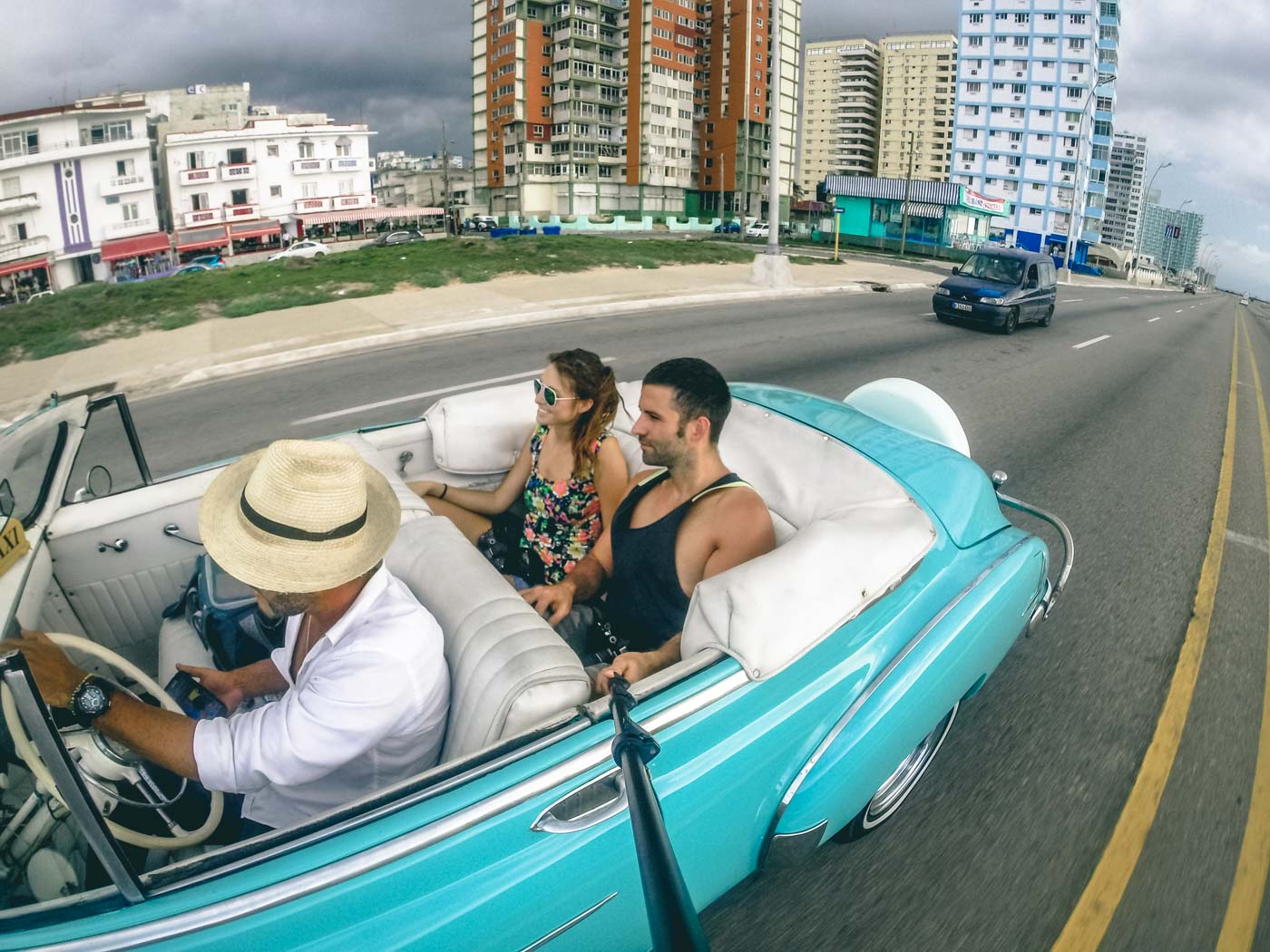
Traveling Soon? Here is a list of our favourite travel providers and accessories to help get you ready for your upcoming trip!
2. WiFi in Cuba is scarce
Another interesting fact about Cuba is that WiFi here is quite limited. Internet connectivity in Cuba has improved in recent years, but it is still relatively limited and can be expensive for locals.
In Cuba, internet access is controlled by the government. Until recently, it was mostly restricted to public WiFi hotspots that were set up in public areas, such as parks and plazas. In 2018, the government began rolling out home internet services, which have become increasingly available in recent years. However, the cost of home internet remains high and is often out of reach for many Cubans.
Public WiFi hotspots are still available in many public areas, and users can purchase a WiFi access card from the state-run telecommunications company, ETECSA, to access the internet. These access cards can be purchased at ETECSA offices or at designated sales points throughout the country, and they can be used to log onto the internet at any public hotspot.
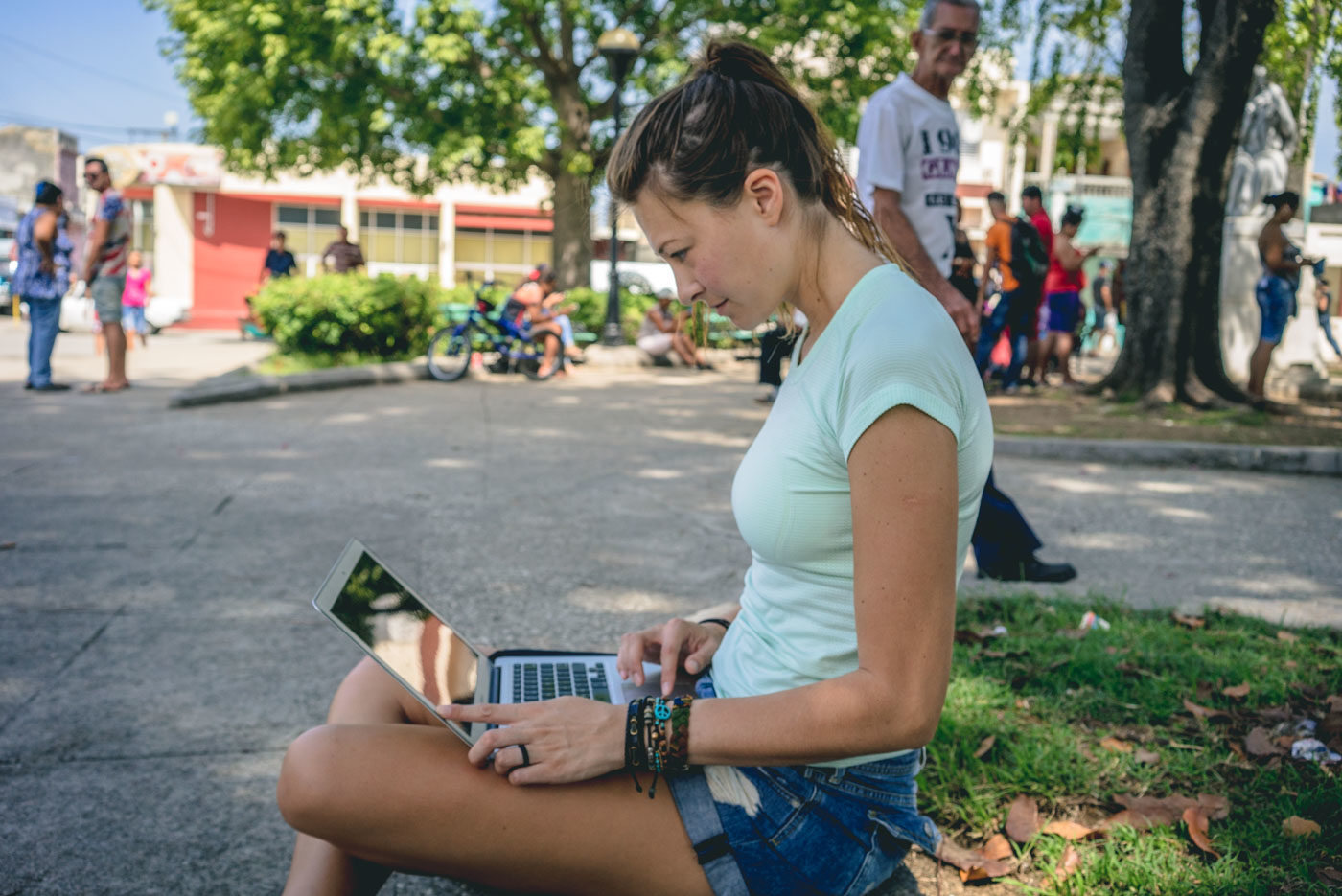
3. Cuba’s Currency is a Bit Confusing
You may have heard that Cuba operates in a dual currency economy, with a Cuban Peso (CUP) and Cuban Convertible Peso (CUC) in circulation. Due to the recent economic reforms in Cuba, this is no longer true.
The official currency of Cuba is the Cuban peso (CUP), also known as the national peso. The Cuban convertible pesos (CUC) are no longer in circulation in Cuba. The Cuban government officially phased the Cuban convertible peso in January 2021 as part of a monetary reform that aimed to simplify the country’s dual currency system.
As a result of the reform, the Cuban peso (CUP) is now the only official currency in circulation in Cuba. The government also established a new exchange rate between the Cuban peso and foreign currencies, including the US dollar.
Moneda Libremente Convertible (MLC) is another currency that was introduced in Cuba in 2019, primarily for use in certain stores that sell imported goods. It is sometimes also referred to as the Cuban dollar, but it is not an official currency of Cuba.
The MLC, a currency pegged to the US dollar, is used to buy commodities like electronics, appliances, and other luxury goods that are not readily available on the local market.
If you plan to visit Cuba, it’s important to know that most transactions are conducted in Cuban pesos (CUP). Foreign currencies such as the US dollar, Euro, and Canadian dollar are widely accepted in certain establishments, such as hotels and some restaurants. It’s also important to be aware of the current exchange rate and any fees that may be associated with exchanging currency.
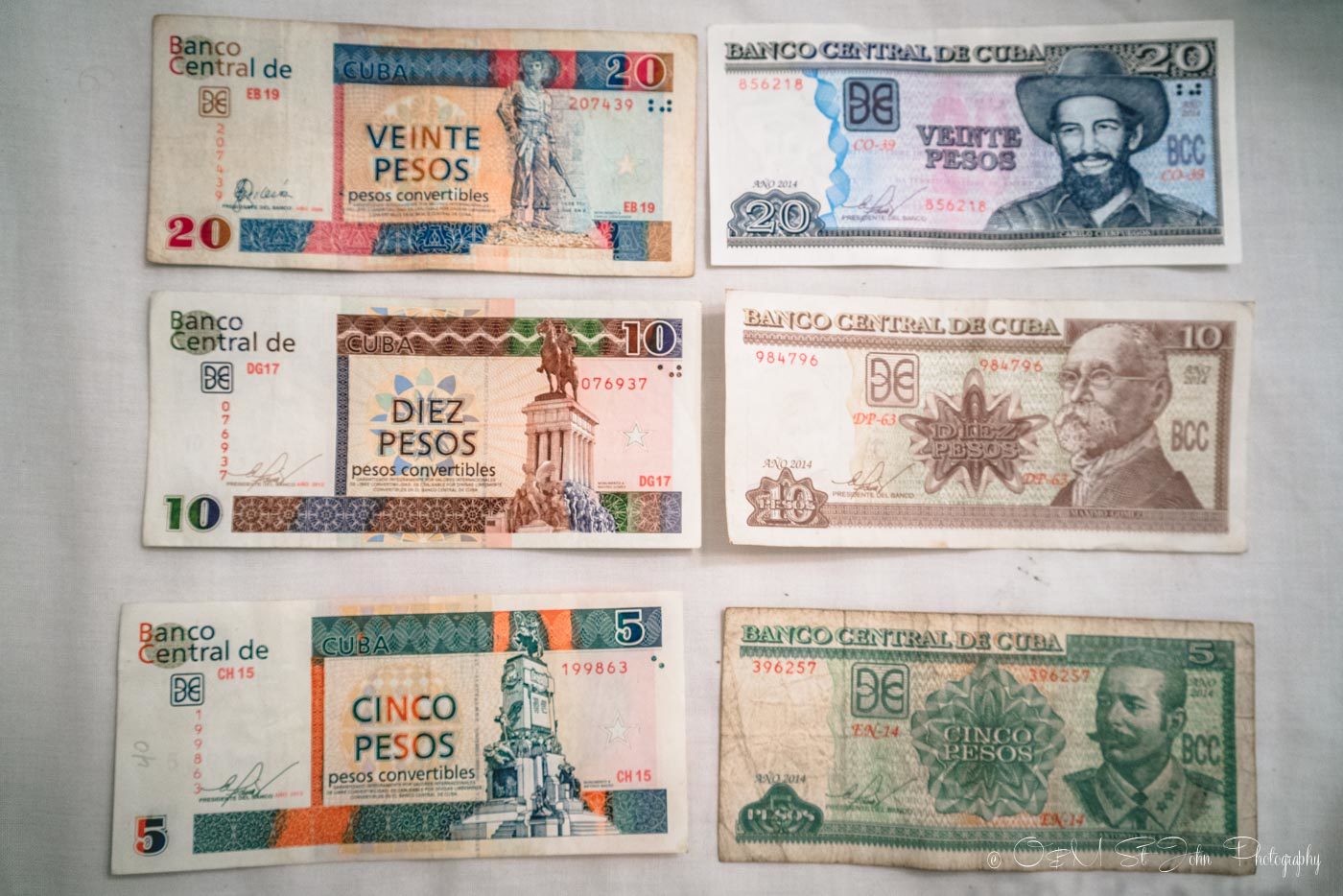
4. Empty Supermarket Shelves are Common in Cuba
Cuba has experienced shortages of certain goods and food items in recent years, particularly in the state-run stores where most Cubans typically shop for groceries These shortages often result in empty supermarket shelves and lengthy lineups in grocery stores across the country.
The US trade embargo, which limits trade with Cuba, a faltering economy, limited access to foreign currency, and supply chain shortages all contribute to the issue. The COVID-19 outbreak has also made matters worse by upsetting global supply lines and making it more difficult for Cuba to acquire necessities.
While the situation may seem dire, it’s worth noting that Cuba has a well-established rationing and food distribution system, which helps guarantee that every resident has access to basic food items.
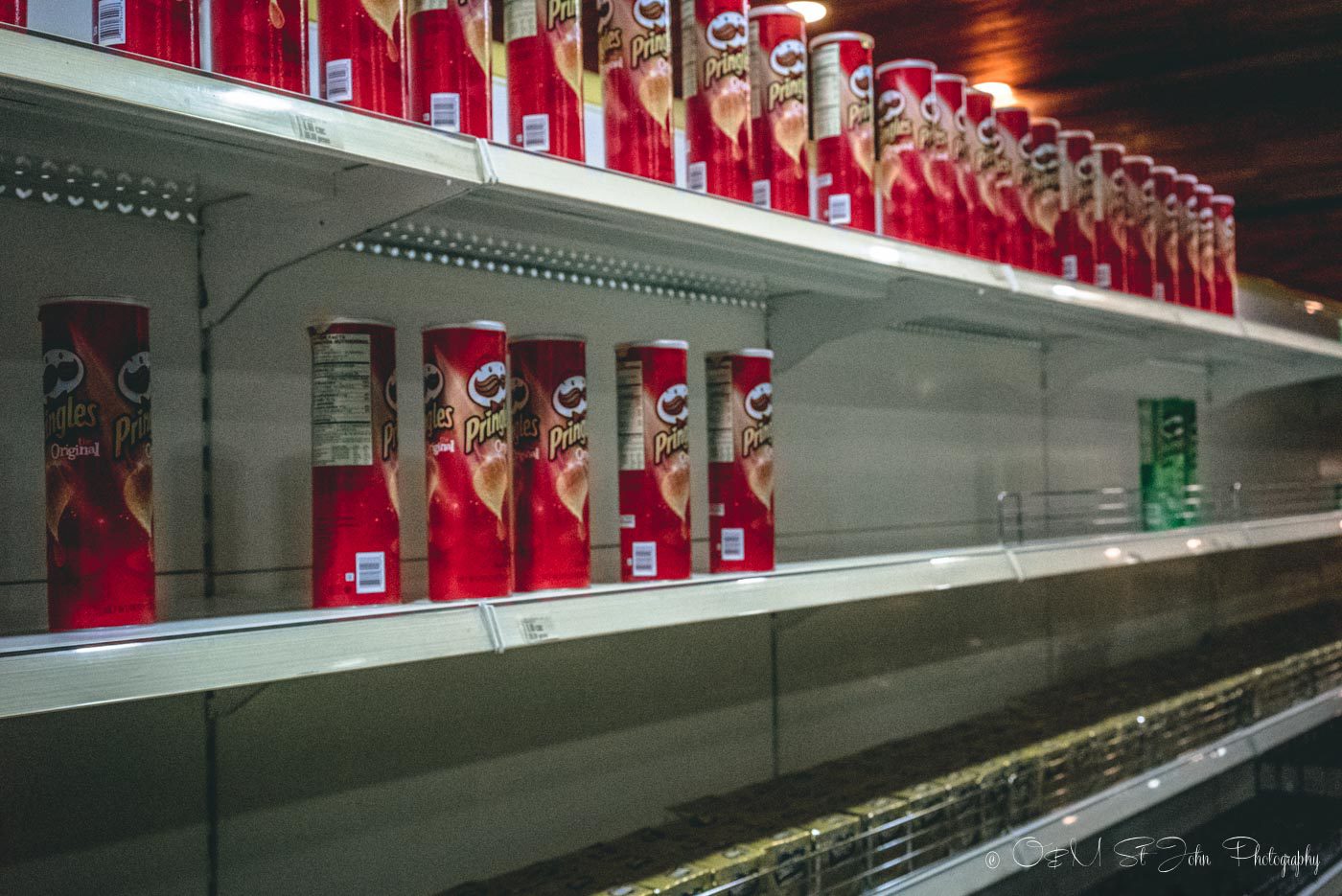
5. Cuban Cigars are the Best in the World
Even if you aren’t a smoker, trying Cuban cigars is a must while in Cuba. Because of their distinct flavour, aroma, and artistry, Cuban cigars are recognized as some of the finest and most prestigious cigars in the world. They are entirely handmade, utilizing an intricate, highly skilled procedure that has been developed over many years.
The tobacco used to make Cuban cigars is grown in the fertile Vuelta Abajo region of Cuba, located in the western part of the country. Before being used to produce cigars, the leaves are meticulously collected and matured for several years. The tobacco’s characteristic flavour and aroma can develop during the maturing process, and it also helps to soften the smoke.
The production of Cuban cigars is highly regulated by the Cuban government, which closely monitors every aspect of the process to ensure that only the highest quality cigars are produced. Each cigar is carefully inspected by hand and must meet strict quality standards before it is packaged and shipped.
We got a chance to learn more about Cuban cigars on a tour of a tobacco plantation during our time in Viñales and would recommend the tour to anyone curious about the experience.
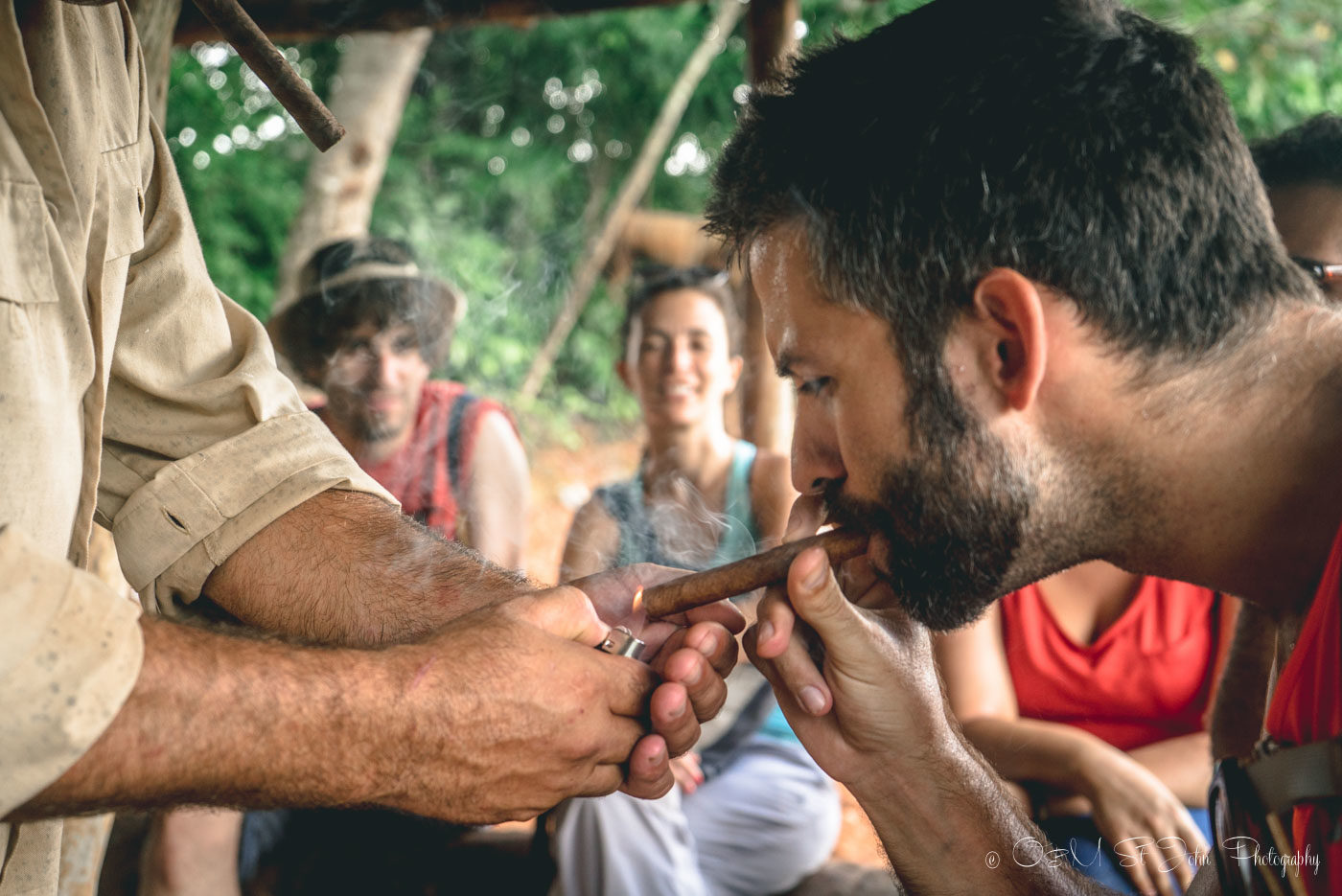
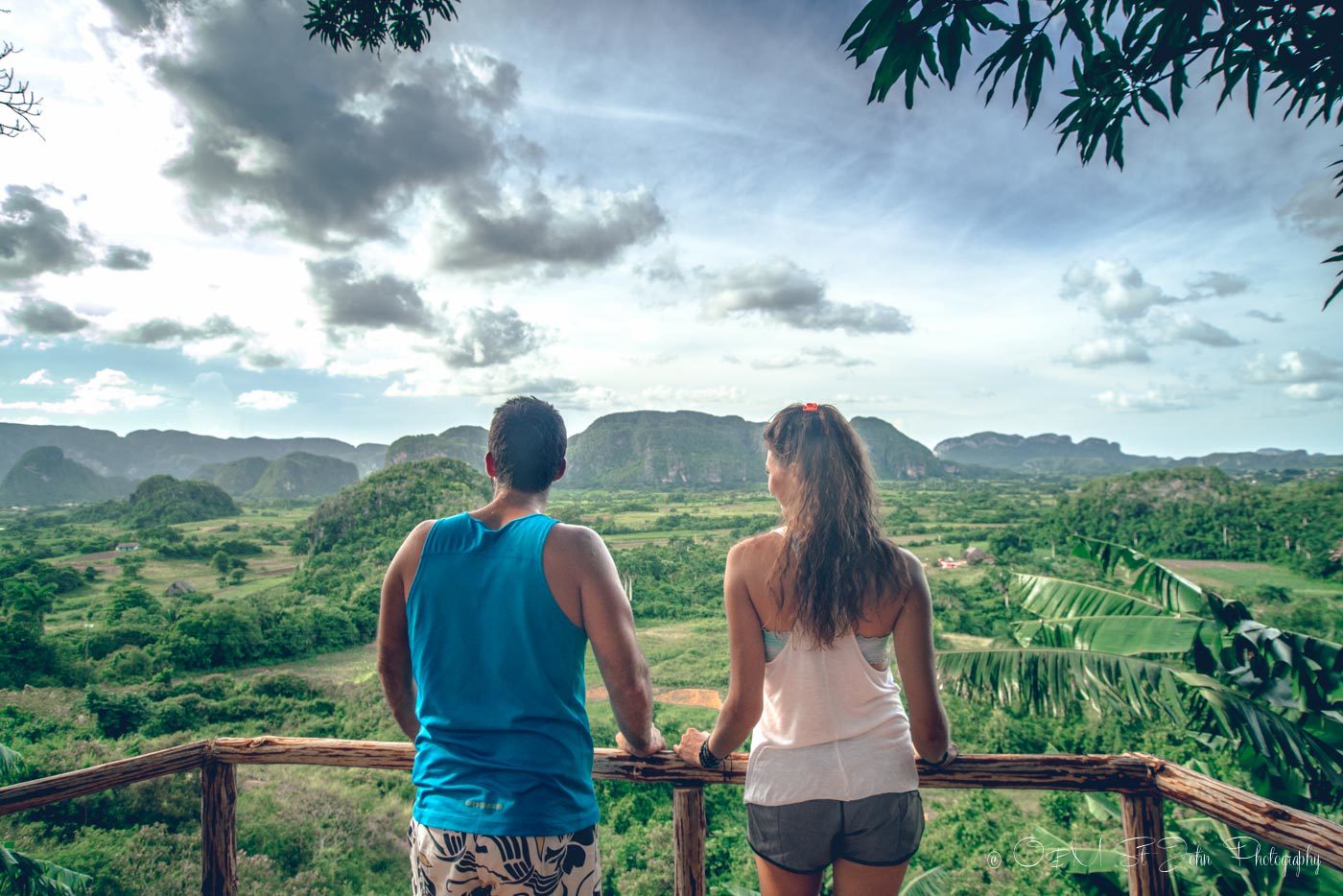
6. Hotels in Cuba are Scarce
This is one of the interesting facts about Cuba that tourists may not realize. Outside of Havana and the beaches of Varadero and Cayo Coco, hotels in Cuba are harder to find. It’s one of the most surprising Cuba facts we discovered while planning our trip.
Many of the hotels in Cuba are owned and operated by the government, although there are also some privately-owned and operated hotels and guesthouses. The quality of the hotels in Cuba can vary widely, with some offering modern amenities and top-notch service, while others may be more basic or outdated.
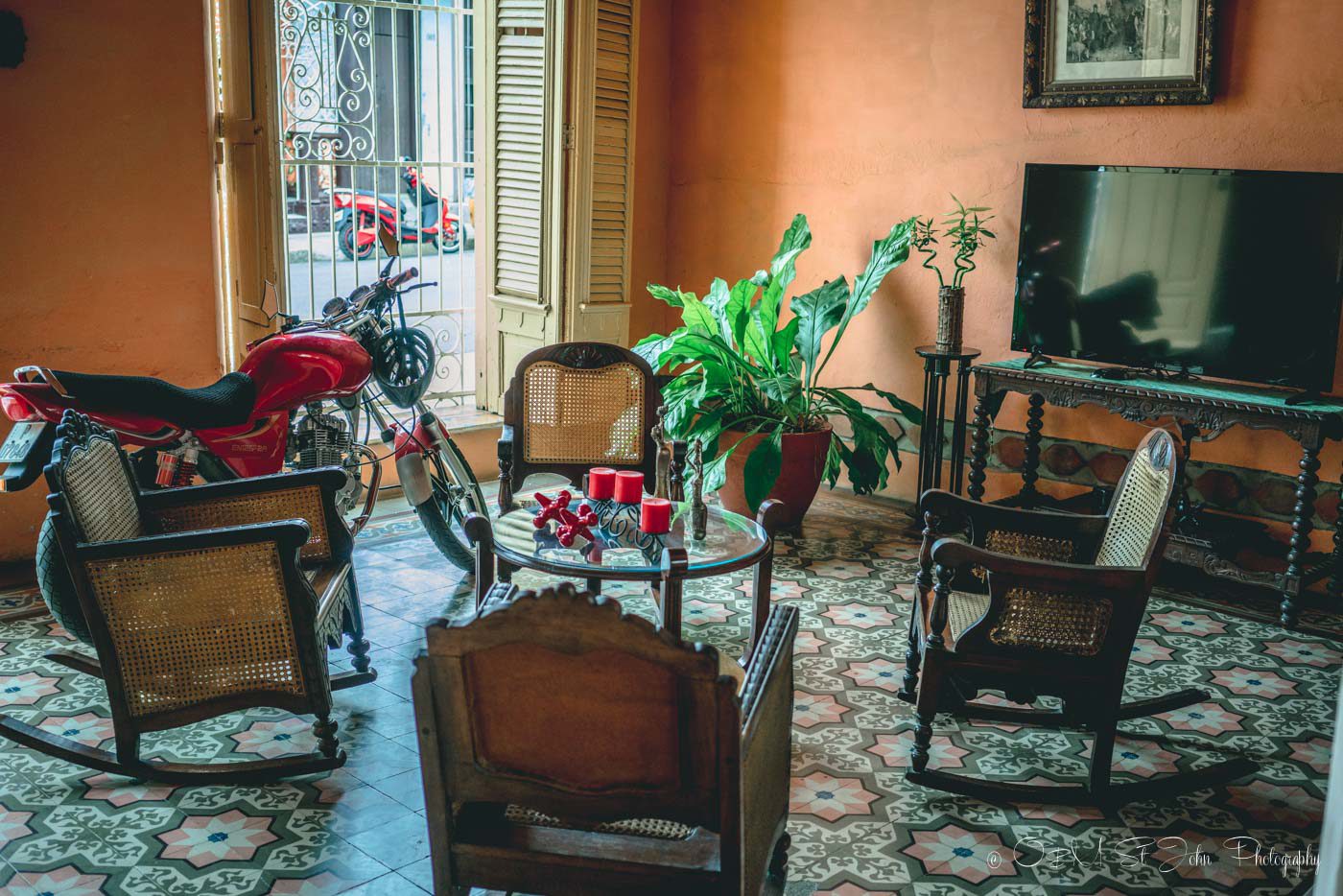
In recent years, Cuba has also seen an increase in private homestays and rentals, known as “casas particulares,” which offer visitors a more authentic and local experience. Think of it as the Cuban version of Airbnb.
Most of them are licensed by the government and are equipped to receive foreign guests. Best of all, you’ll have the experience of staying with a local family, eating home-cooked meals, and supporting a local family while getting the feel for real Cuba.
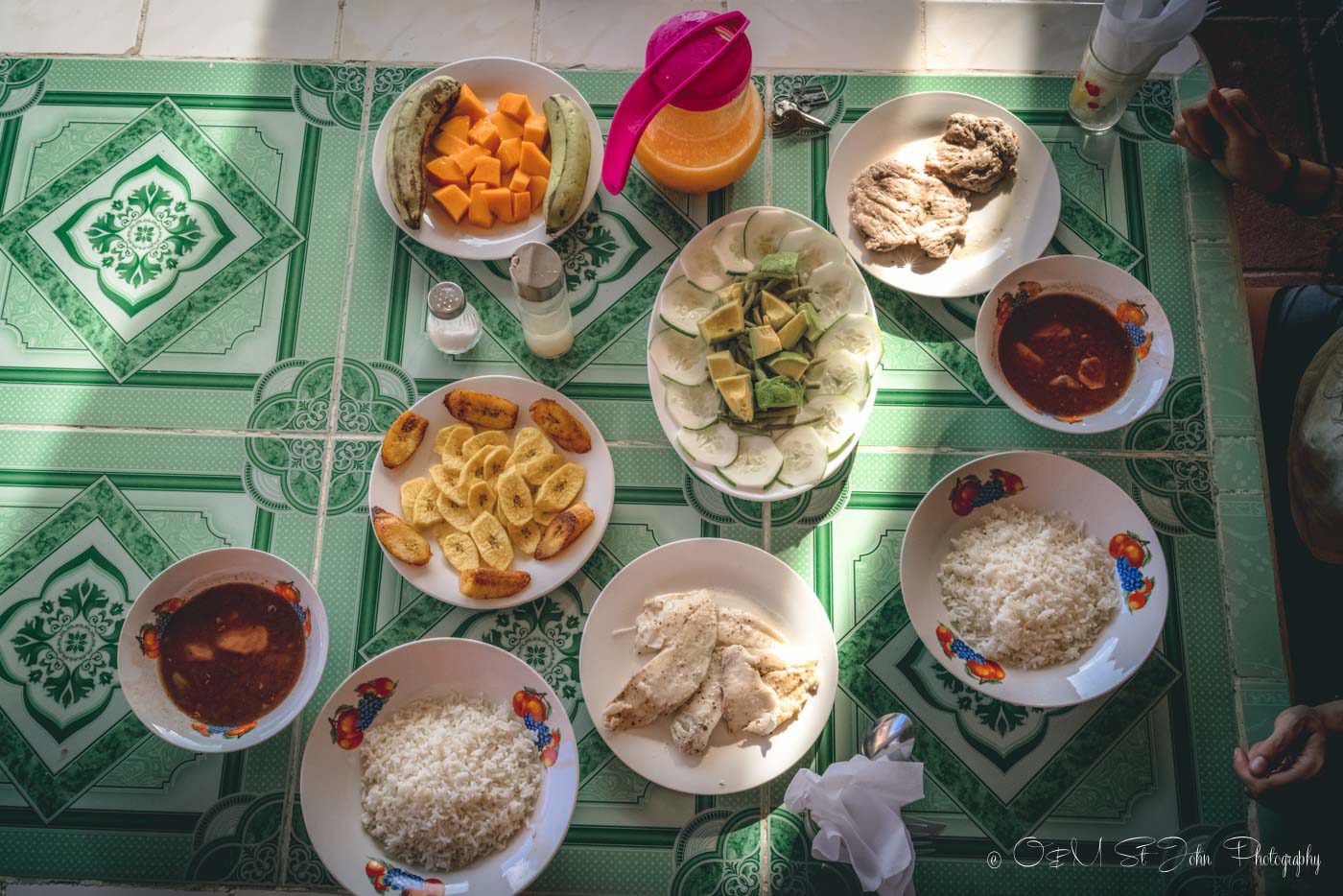
7. The average Cuban salary is shockingly low
The average monthly wage in Cuba is around $125 USD per month. The exact amount varies based on the type of company someone works for, how many employees there are, and the level of someone’s experience and education. Government workers typically make more than the average. The amount is also increasing each year; just a few years ago, it was as low as $20 USD per month.
The Cuban government provides a range of social services to citizens, including free education and healthcare, subsidized food and housing, and access to cultural and recreational activities. However, the low salaries and limited job opportunities can make it challenging for many Cubans to make ends meet, and the country continues to face economic challenges as it works to develop its economy and improve living standards.
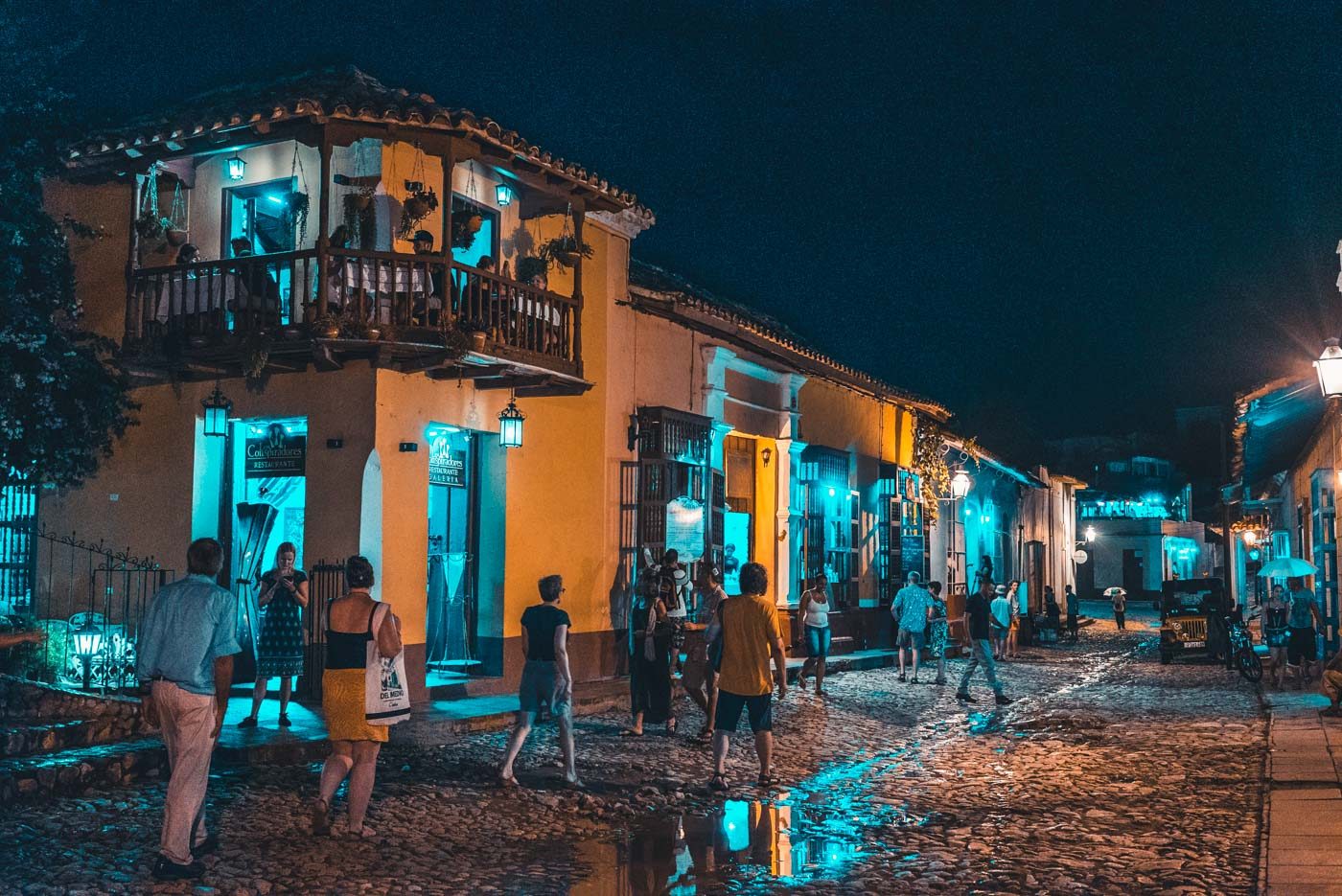
8. Lots of Bills are Subsidized by the Government
Since the average salary is so low, President Raul Castro’s government subsidizes several bills and monthly expenses to support Cuban residents. This includes healthcare, food, clothing, transportation and education. This practice dates back to the reforms that followed the Cuban revolution, which ended with the victory of the revolutionary forces led by Fidel Castro in 1959.
As a result of these subsidies, despite the relatively low wages, Cuba’s poverty level ranks very low amongst developing countries. By contrast, however, they land near the bottom of the charts for fiscal and economic freedom.
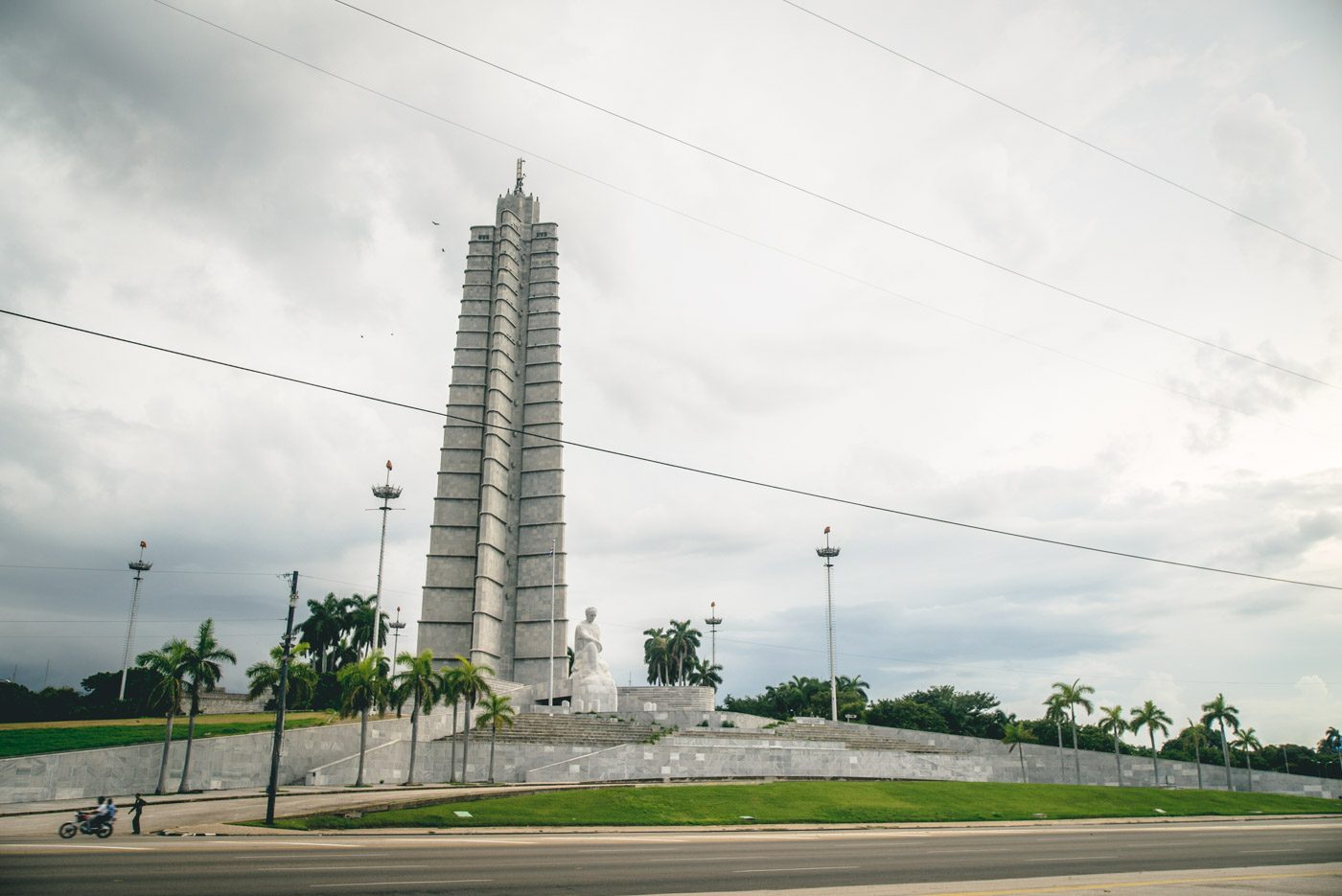
9. Cuba is Famous for its Old Cars
If you’re looking for fun facts about Havana, Cuba, you’ll appreciate this: old cars are a part of Cuban history and culture!
After the Cuban Revolution in 1959, Cuba became a socialist country and was cut off from many countries, including the United States. The US imposed a trade embargo on Cuba in 1960, which prevented new American cars and parts from entering the country.
As a result, Cubans had to rely on the old American cars that were already in the country, many of which dates back to 1940s and 1950s. Cubans had to use their imagination and ingenuity to repair and maintain these outdated vehicles. This led to a distinctive car culture in Cuba that eventually represented Cuban heritage and nostalgia.
Several Cubans have preserved their vintage vehicles as family treasures and take great delight in them. These vintage vehicles have recently attracted new interest and are now a favourite fun fact about Cuba and a well-liked tourist attraction
10. Cubans Love Dominoes…
The game of dominoes is one of the favourite pastimes of Cubans. Here is a fun Cuba fact: dominoes are Cuba’s favourite sport. You’ll often see people sitting around at tables outside playing the game. Cuba has its own set of local rules for the game, typically using ten tiles at a time, rather than seven.
This fondness for dominoes stems, in part, from the period before electricity was widespread across the country. In cities or rural areas, it was equally likely to see people playing in parks or on porches.
The game of dominoes is still embedded in the culture today, although these days it serves as a great reason to have a couple of drinks with friends while catching up about life. Whether people are playing with neighbours, friends or relatives, a good game of dominoes provides a relaxed, cheerful atmosphere to get close to someone.
At this point, dominoes are an essential part of Cuban culture!
11…and Sandwiches!
In Cuba, a Cuban Sandwich is just a sandwich, a simple and affordable meal that became popular in Cuba thanks to its convenience and portability. Traditional sandwiches are called “mixto” and are made with ham and cheese on Cuban Bread.
Sandwiches also have a social and cultural significance in Cuba. They are often eaten as a quick and casual meal with friends and family, or as a snack while socializing or watching sports. Sandwiches have become a part of Cuban culture and are often associated with the warmth and conviviality of Cuban hospitality.
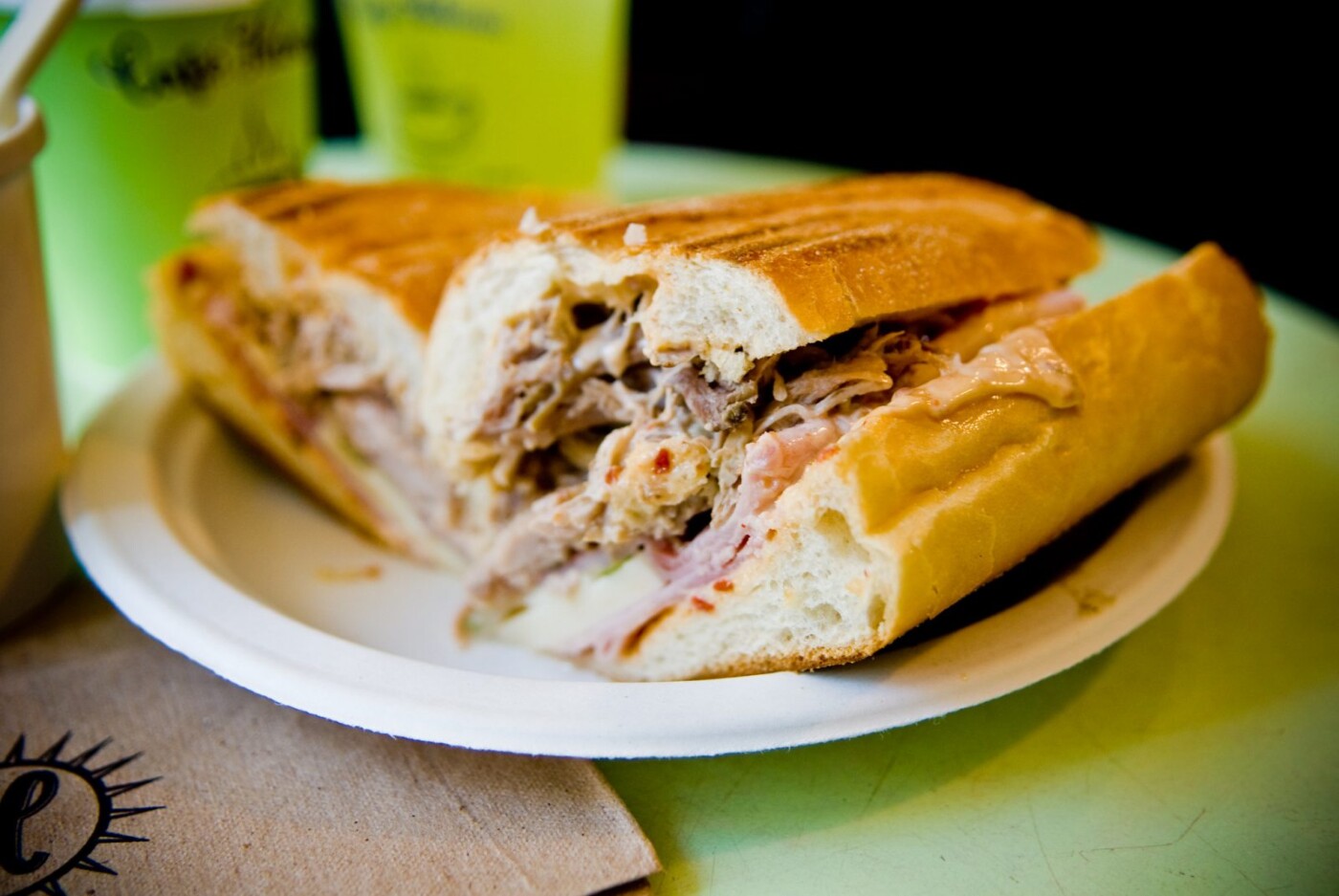
12. There are Nine UNESCO Sites in Cuba
Cuba is the proud home of no fewer than nine UNESCO World Heritage sites dotted all over Cuba map.
These include Old Havana and its Fortification System, Trinidad and the Valley de Los Ingenios, Viñales Valley, Alejandro de Humboldt National Park, the Archaeological Landscapes of the First Coffee Plantations in the South East of Cuba (try saying that ten times fast), the Historic Centre of Camaguey, San Pedro de La Roca Castle, the Urban Historic Centre of Cienfuegos, and Desembarco del Granma National Park.
Old Havana was included in 1982, while the Historic Centre of Camaguey was added in 2008. Three other sites are also being considered for nomination: Cienaga de Zapata National Park, the National Schools of Art, and the Reef System in the Cuban Caribbean.
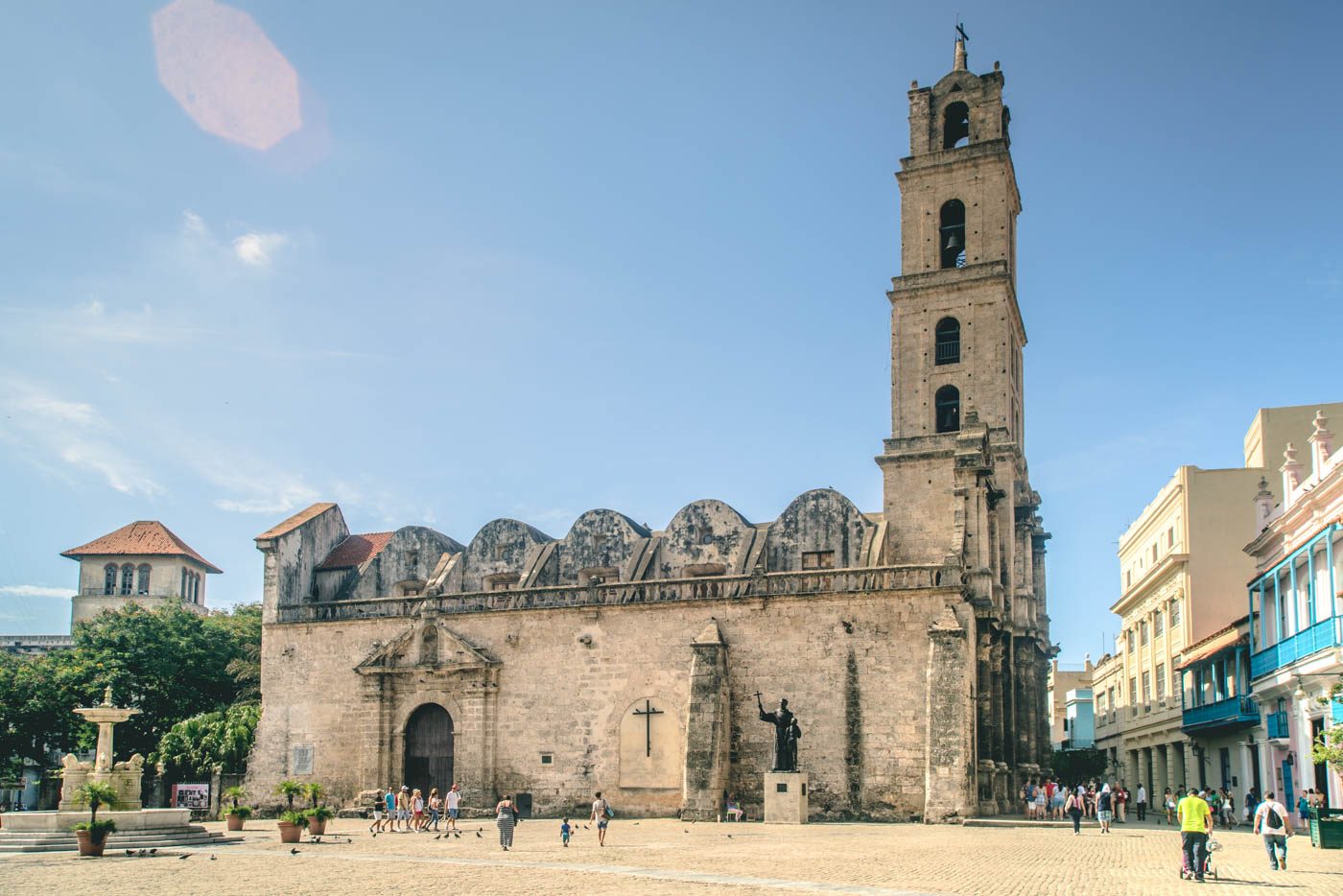
13. Doctors in Cuba are Highly Skilled
Cuban doctors are not hard to come by. One of the highest patient-to-doctor ratios can be found in Cuba, making doctors one of the country’s strongest commodities. In fact, there are more doctors here than on the continent of Africa—how’s that for one of the craziest Cuba fun facts?!
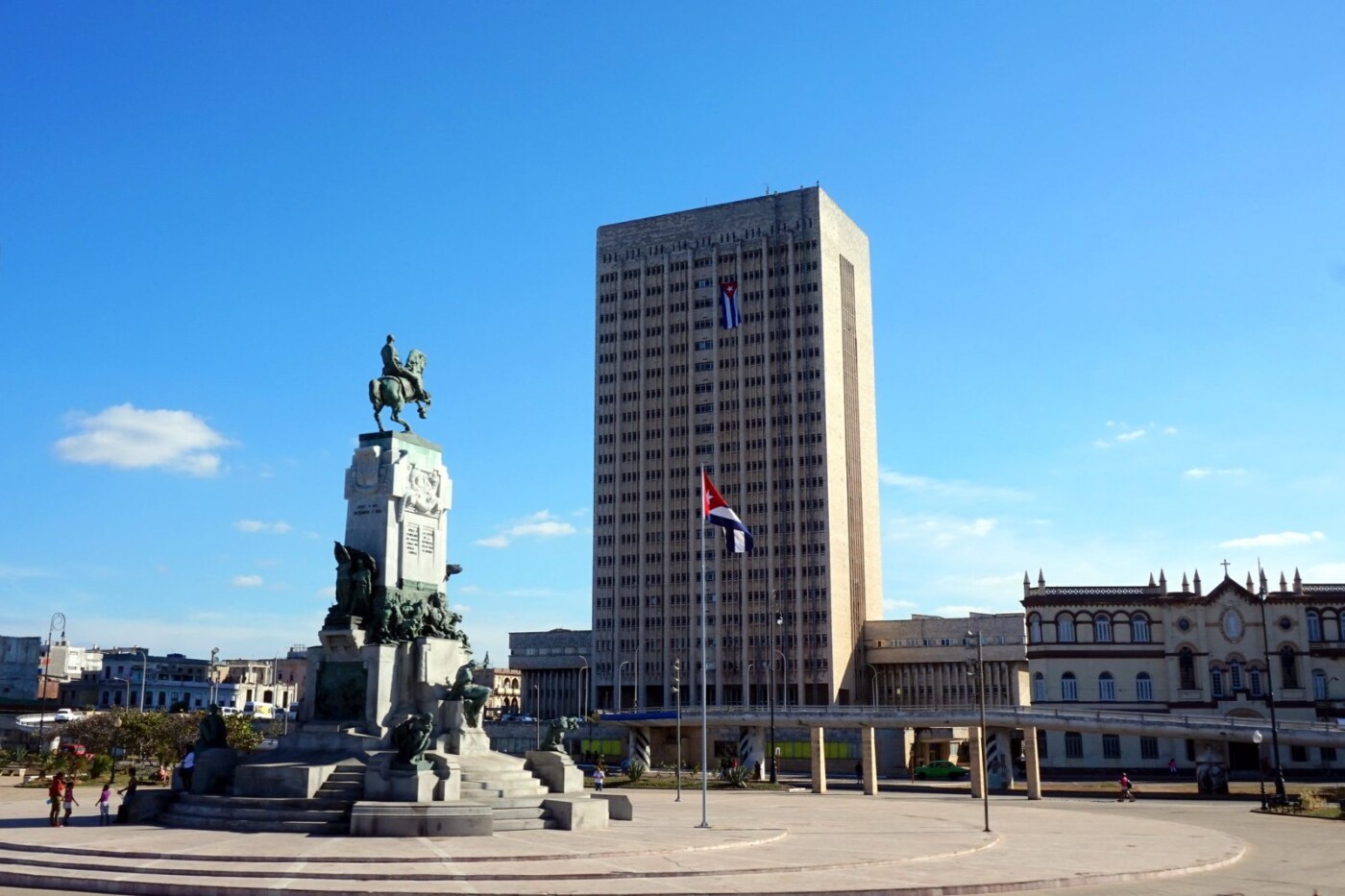
Cuba has a long history of sending doctors overseas, and in addition to the positive impact that comes from their charitable work, they also bring back billions of dollars each year into Cuba’s economy.
14. Medical Tourism is on the Rise in Cuba
With so many qualified medical professionals, you’d be right to assume that healthcare in Cuba is extremely good. They’ve even pioneered their own COVID-19 vaccine! Not only that, but healthcare in Cuba is free for this residents!
Many consider Cuba to have some of the best doctors in the world, with incredible talent and professionalism. Cuba has become a popular destination for medical tourism due to the high quality of medical care, as well as the affordable prices compared to many other countries.
There are a number of specialist hospitals and clinics that cater particularly to medical in Cuba and the government has been actively pushing medical tourism as a strategy to strengthen Cuban economy. Facilities in these hopsitals frequently include cutting-edge equipment and highly skilled medical staff. The country offers a wide range of medical services, including cosmetic surgery, dental treatments, and traditional medical procedures.
15. Education is Free and Mandatory
In addition to free healthcare, education is also free for citizens. Children and teenagers are required to attend school for the first nine years. Additional three years of free education are also on offer. For those who choose to stop after the first nine years, technical training is available.
The education system was nationalized in the late 1950s, when less than half of the country’s children had access to education. Now, Cuba has the highest literacy rate not just in Latin America, but in the world, with one of the biggest trade offs being the expectation of community service.

16. Cuba has a high literacy rate
According to the United Nations Educational, Scientific and Cultural Organization (UNESCO), the literacy rate in Cuba is estimated to be over 99%, which is among the highest in the Americas and the world. It’s also one of the few countries in the world where the female literacy rate is higher than the male literacy rate.
In addition to regular education, Cuba has placed a significant emphasis on literacy initiatives and programs. These have been particularly effective in rural areas and among marginalized part of the population..
17. Americans Still Have Limitations on Visiting Cuba
Technically, Americans still have limits for visiting Cuba, but it is much easier than it was in the recent past. Americans can’t visit Cuba for tourism reasons, but there are 12 categories of authorized travel, including family visits, educational activities, and professional research.
Americans who wish to travel to Cuba must obtain a travel authorization, known as a “general license,” which allows them to travel to Cuba for specific purposes. They also need to keep records of their activities and transactions in Cuba, as these may be subject to review by US authorities upon their return to the United States.
The Cuban tourist card, also known as a “Tarjeta del Turista,” is a mandatory entry requirement for most foreign visitors to Cuba, including Americans. The tourist card is a type of visa that allows visitors to stay in Cuba for up to 30 days and is usually valid for a single entry. It is issued by the Cuban government and can be obtained in advance from a Cuban embassy or consulate, or it can be obtained upon arrival at the airport in Cuba.
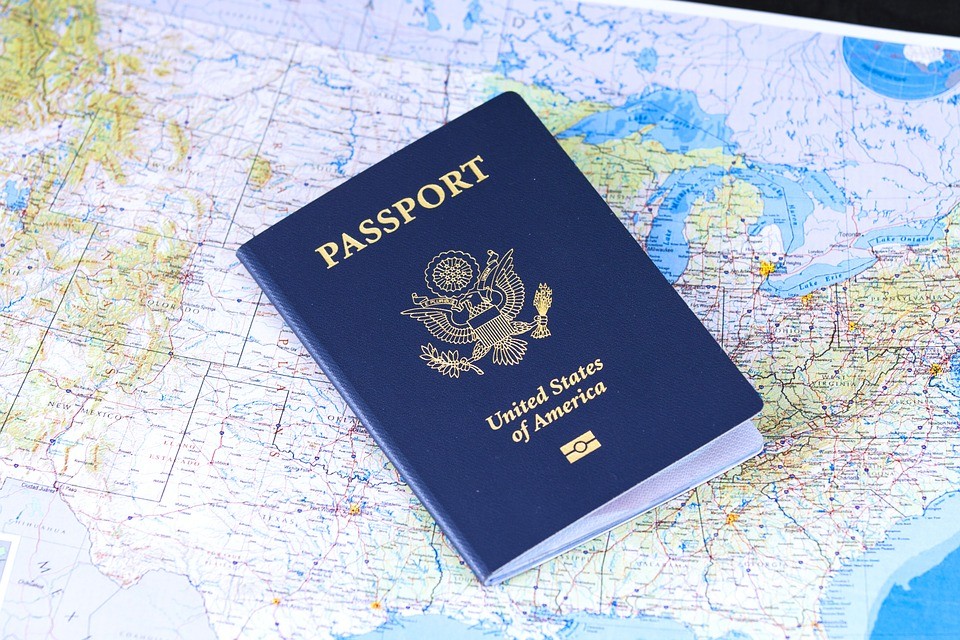
18. There is no Coca Cola in Cuba
Cuba is one of only two countries in the world (North Korea being the other) that does not sell Coca-Cola. This is due to the trade embargo that the United States has imposed on Cuba. You can still buy it at some select and discrete stores under the counter, but its not widely available in regular supermarkets and minimarkets.
The Cuban government has also allowed other foreign companies to produce and sell soft drinks in Cuba, such as Tropicola and Cachito.
19. Most Insurance Companies Don’t Cover Travel to Cuba
Health insurance is a requirement for entry into Cuba. However, if you’re American, you may struggle to find a company that will insure you for your travel to Cuba. Many US insurance companies don’t offer coverage in Cuba, due to the ongoing trade embargo that the United States has imposed on Cuba.
It’s an important Cuba fact to consider when planning your trip. If your insurance says ‘worldwide,’ you should probably call and double-check that ‘ worldwide’ also includes Cuba. There are policies that are issued by non-US insurance companies may be able to provide coverage for travel to Cuba, and some US-based policies may provide coverage for travel to Cuba if it falls under one of the authorized categories of travel.
20. Cuba Hosts one of the Biggest Carnivals in the Caribbean
If you’re interested in a colourful and upbeat celebration, head to the Carnaval de Santiago de Cuba.Taking place in the town of Santiago de Cuba, this is the largest carnival celebrations in the Caribbean, with plenty of dancing, singing, parade floats and exciting conga lines
The festival usually in late July or early August and lasts for about a week. The Carnival features a wide range of cultural and musical events, including parades, live performances, street parties, and more.
